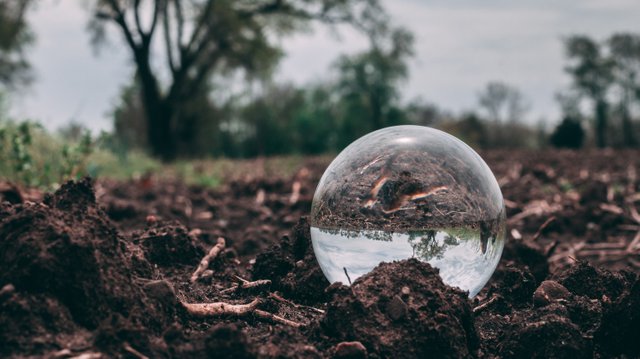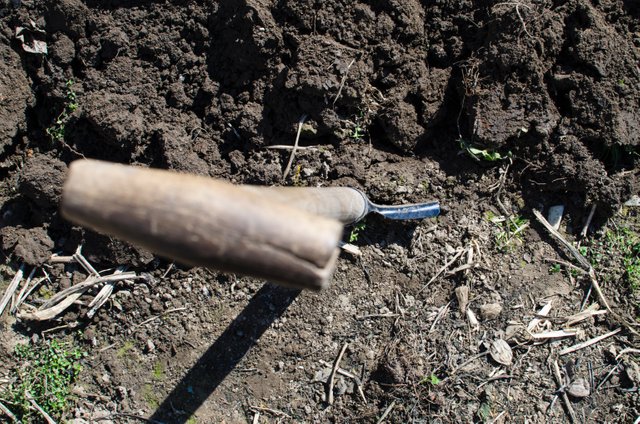How to Microbrew Compost Tea
Compost tea is an amazing way to distribute the beneficial microorganisms from compost into the garden. This article explains detailed information on what compost tea is and why it is so great for the garden. Brewing tea at home is cost effective, helping to stretch compost supplies as well as creating a premium product for little effort. With a few inexpensive items and simple steps, brewing compost tea at home can be fun and easily.

Not all tea is made the same: Source
Brewing in small batches is a great way for beginners to start and learn from the process. Brewing more than one or two gallons at a time requires investing in a stronger air pump specifically designed for larger volumes of water as well as needing an additional filtration step. It is also important to note that the shelf life of compost tea is very short and needs to be utilized as soon as possible for maximum results. As the tea sits unused oxygen levels in the water decline as do available nutrients and microbial life. There is a very limited timeframe in which the tea can be brewed and used before it spoils.
Supplies needed for microbrewing compost tea are: a 1-2 gallon container, a fish tank air pump with hose, an air stone, good compost, seaweed extract and unsulfured black strap molasses. Pure room temperature water is also needed. Most municipalities chlorinate their drinking water so letting it sit out for 24 hours will allow the chlorine to evaporate. Other organic fertilizers may be added turning the brew into nutrient tea, but this will also alter the composition of the microbial life inside the tea as well, changing its function. Concentrated forms of compost tea are available for sale, and these can be used to seed and optimize microbial diversity inside home brewed teas. These additions however are unnecessary for the process of brewing compost tea.

There is life in the soil: Source
To make compost tea, firstly combine all the ingredients together into a container. For each gallon of water add roughly 2 cups of compost, one ounce of seaweed extract, and two ounces of molasses mixing very thoroughly. A small amount of local garden soil could be added as well, to incorporate local microbial life. Attach the hose, airpump, and airstone together. The airstone should easily be placed on the bottom of the container, defusing the pumped air into tiny bubbles. This process will oxidize the water, ensuring that only beneficial aerobic bacterial life will proliferate in the tea. The more oxygen in the water the happier the plant will be as oxygen is absorbed by the plants roots and is vital for growth.
Allow the tea to bubble and brew for 24-48 hours, being sure to agitate the sediment at the bottom with a spoon or stick, mixing the liquid several times through the process. The molasses has some minerals and will serve as carbohydrates for the microorganisms. The seaweed will provide an ample source of micronutrients and minerals. As time goes by, the microbes living in the tea will reproduce exponentially as long as there is a food source. Should the sugars inside the tea deplete, so would the living microbial biome, reducing the tea’s benefits drastically. Understanding that time is a key component to successful brewing is critical. Should at any point the tea start to smell sour or foul, it has spoiled and needs to be recycled into compost, but not used on live plants.
Once the brewing time is complete, the tea is ready to be used to nourish the soil, and benefit any plant. Apply the tea immediately and do not store it to be used later. Be aware that the tea will have sediment in the bottom of the container. This can be filtered out using another container and some cloth, but it is not necessary for soil drenches as the compost sediment can be added directly into the garden. If filtered well however, the tea can be applied through a sprayer as a foliar feed or spray fertilizer application. Using the tea with other fertilizers will help the nutrients absorb into the soil and feed the plants, increasing soil life.

Soil has soul, dirt does not: Source
Compost tea is full of the stuff soil and plants love and is liquid gold for any garden. Being a great way to extend the usefulness of compost and adding to the diversity and mass of microbial life, compost tea is a great tool for a gardener to utilize, maximizing soil conditions to create healthy and abundant plants.
Activated compost tea is a marvel. I do 60l tubs of it at one time!
Posted using Partiko Android
That sure is a lot of tea.
Everything gets a good bath
I'll have to try this method. I generally just use a bucket and put broadleaf weeds and comfrey in and a handful of chook or whatever manure I have. It does end up stinky, so the aerating with pump is a good idea - or perhaps I should just stir it once in a while?
There is good bacteria in your anaerobic, or cold composting method. The cold compost can be used in making compost tea, since the water will be oxidized with bubbles, only the aerobic bacteria proliferate. I wouldn't use a pump in your cold compost. You are making a lot of really good bacteria, enzymes, fulvic acid and humic acid which are great for the soil. Stirring it really well will help it cook faster.
This post has received a 3.13 % upvote from @drotto thanks to: @sbi-booster.
Very nice, good thing about treating nature right is that it gives back :)
It's the natural principle of return, more input equals more output.
Thanks for these informative article. I never heard about compost tea before. It´s a very great method to support the plants with natural essentiells. Keep on doing!
Thank you for the feedback.
Thanks for sharing. We will be trying a similar brew for our 400 olive trees. I'll post it up when we have tried it out.
Posted using Partiko Android
Congratulations @permaculturedude! You have completed the following achievement on the Steem blockchain and have been rewarded with new badge(s) :
Click here to view your Board of Honor
If you no longer want to receive notifications, reply to this comment with the word
STOPDo not miss the last post from @steemitboard:
You got a 9.37% upvote from @ocdb courtesy of @permaculturedude!
@ocdb is a non-profit bidbot for whitelisted Steemians, current max bid is 15 SBD and the respective amount in Steem.
Check our website https://thegoodwhales.io/ for the whitelist, queue and delegation info. Join our Discord channel for more information.
If you like what @ocd does, consider voting for ocd-witness through SteemConnect or on the Steemit Witnesses page. :smiley:
Congratulations! This post has been upvoted from the communal account, @minnowsupport, by permaculturedude from the Minnow Support Project. It's a witness project run by aggroed, ausbitbank, teamsteem, someguy123, neoxian, followbtcnews, and netuoso. The goal is to help Steemit grow by supporting Minnows. Please find us at the Peace, Abundance, and Liberty Network (PALnet) Discord Channel. It's a completely public and open space to all members of the Steemit community who voluntarily choose to be there.
If you would like to delegate to the Minnow Support Project you can do so by clicking on the following links: 50SP, 100SP, 250SP, 500SP, 1000SP, 5000SP.
Be sure to leave at least 50SP undelegated on your account.
I thought people used coffee, never heard of tea!
Thanks for sharing.
I love coffee! :)